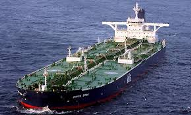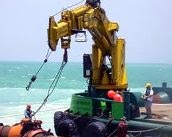Parex Resources Inc., the Canadian oil producer operating in Latin America, is focusing its growth efforts on Colombia as it aims to double production in the next five years.
CEO Wayne Foo is planning more land and asset acquisitions to boost the company’s output to as much as 50,000 bpd, he said in an interview at Parex’s headquarters in Calgary yesterday. Colombia’s stable government and well-understood oil resources make it a better investment than other countries in the region such as Argentina, Foo said.
“To be relevant in the market, you really have to be in the range of 25,000 to 50,000 barrels a day,” he said. Production will grow as much as 20% annually from 17,500 to 18,500 bpd this year, he said.
Parex began as an oil producer in Argentina in 2003. The Colombian business was spun off in 2009 and based in Calgary. One of about 10 Canadian energy producers operating in Colombia, Parex produces both light and medium crude in the Llanos basin.
Parex’s shares have more than doubled in the past 12 months, valuing the company at about C$1 billion ($911 million). The stock declined 2.1% yesterday, closing at C$9.50 in Toronto.
“They still have upside,” said John Stephenson, who helps oversee about C$3.1 billion at First Asset Investment Management Inc. in Toronto. “Historically they have been drilling targets that were small and they’re now going after bigger plays to add resource.”
The Canadian company has focused on purchasing land near its current holdings in the Llanos basin, boosting its position to about 2 million acres (809,371 hectares) from 250,000 acres in 2009.
Parex’s largest non-state-owned competitor is Pacific Rubiales Energy Co., a Bogota and Toronto-listed company with a market value of about C$6.7 billion. Colombia in February produced about 1 MMbpd of crude, according to the country’s Mines and Energy Ministry.
Oil transportation infrastructure has caught up with production, helping to relieve a bottleneck that existed for producers a couple of years ago, said Parex V.P. Mike Kruchten. Last year the Bicentenario line began operating, while the Ocensa pipeline has been expanded. Calgary-based Enbridge Inc. is also considering building a line to Colombia’s Pacific coast.
“At present there’s lots of excess capacity” in pipelines, said Foo.
Parex earns about 3% to 4% less on its Colombian oil than Brent crude, the global benchmark, said Kruchten. Brent crude for May settlement traded at about $106 a barrel on April 7.
Providing useful resources, articles and writings on crude oil, other petroleum products, energy and gas. By Blockline and Associate Ltd Nigeria Ltd, online.

 Nigeria Bonny Light Crude Oil (BLCO, FLCO and ALCO, etc): We sell mostly on FOB, CIF, TTO and TTT/STS Basis.
Nigeria Bonny Light Crude Oil (BLCO, FLCO and ALCO, etc): We sell mostly on FOB, CIF, TTO and TTT/STS Basis. We sell and lease tug-boats of all kinds.
We sell and lease tug-boats of all kinds.

No comments :
Post a Comment